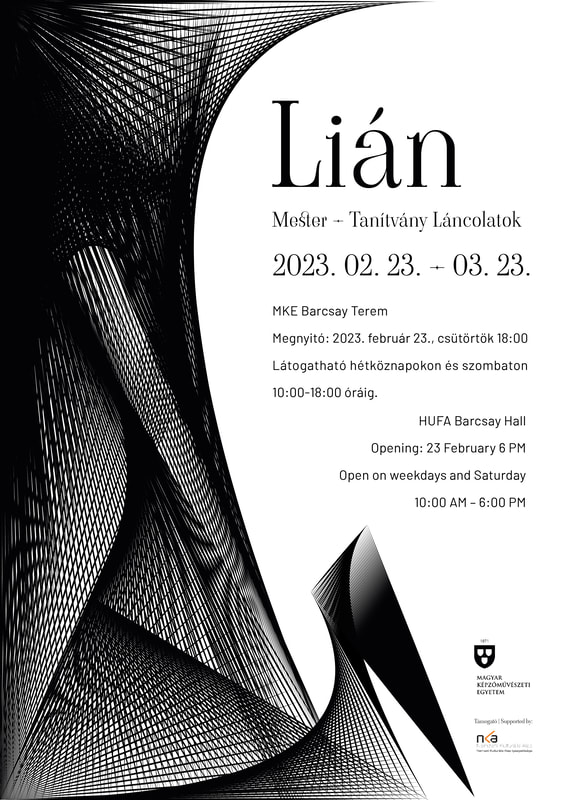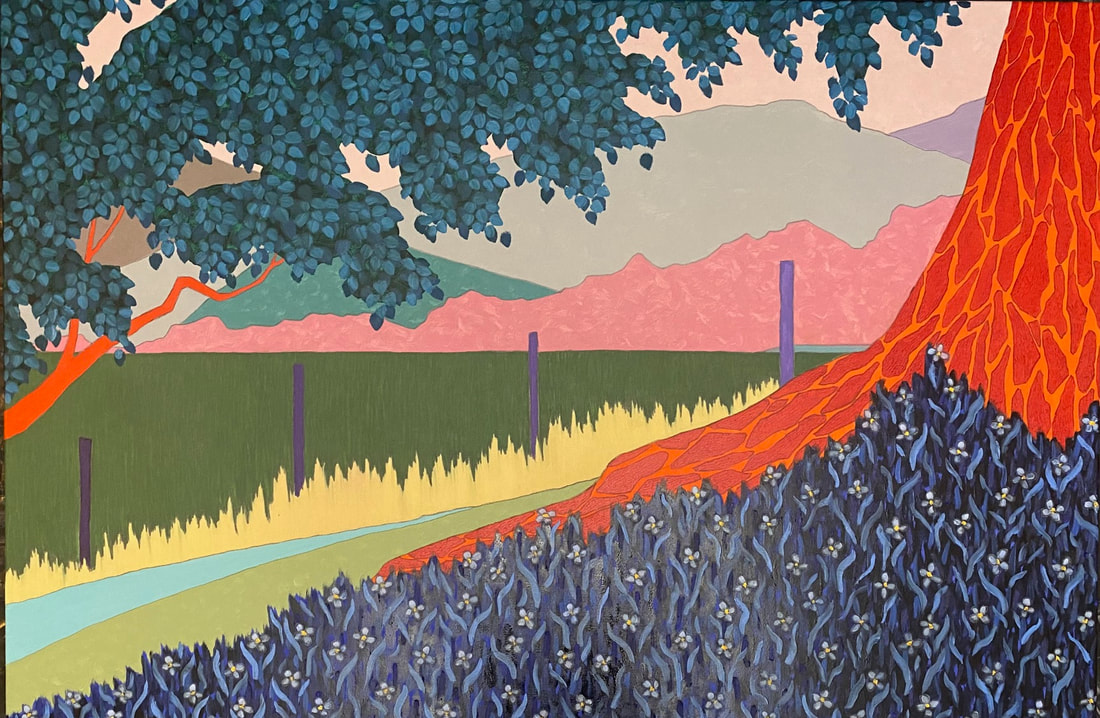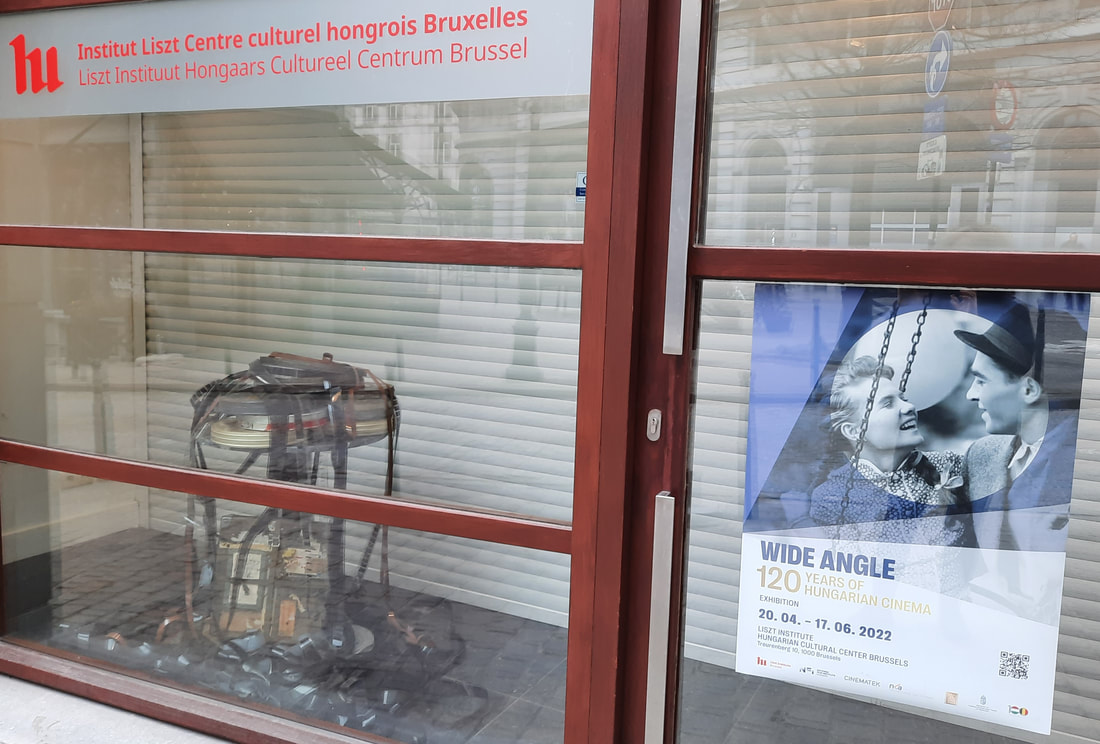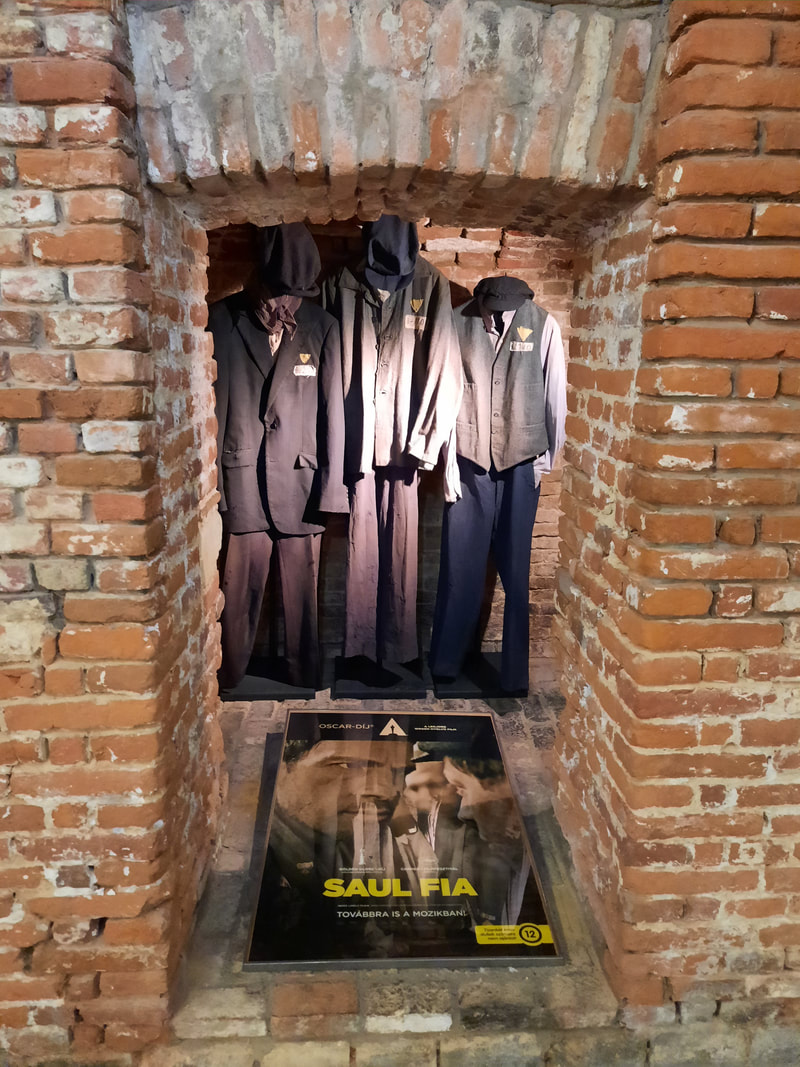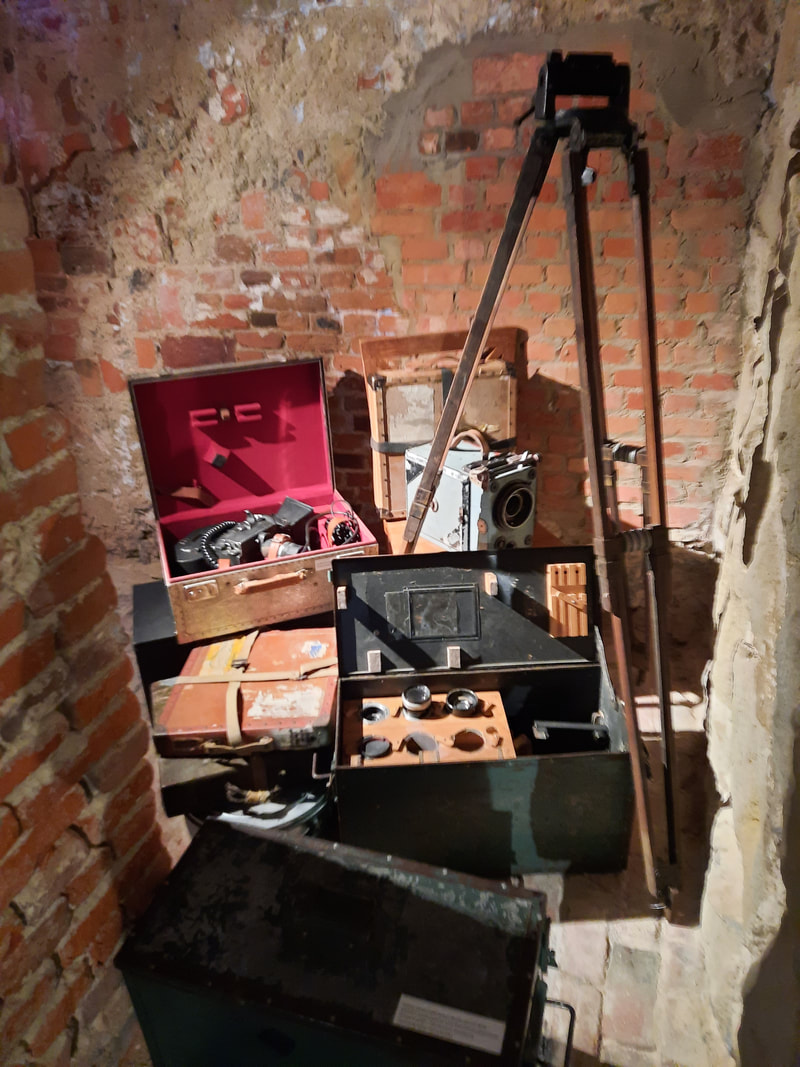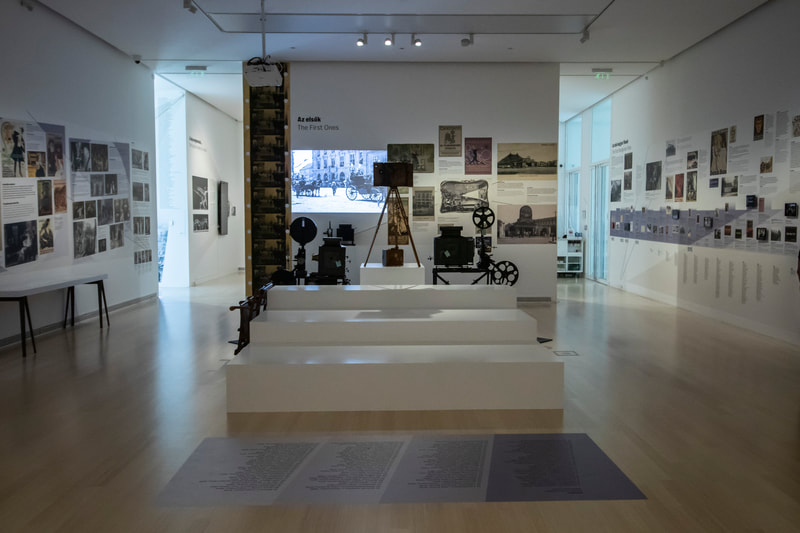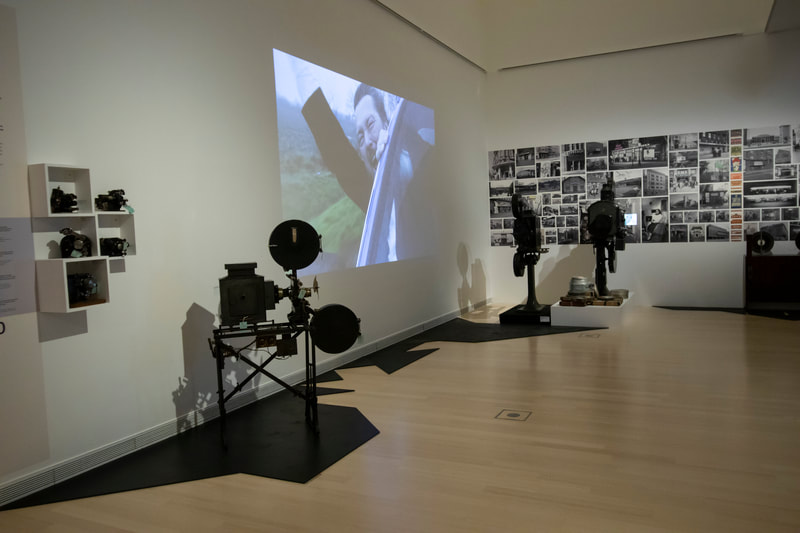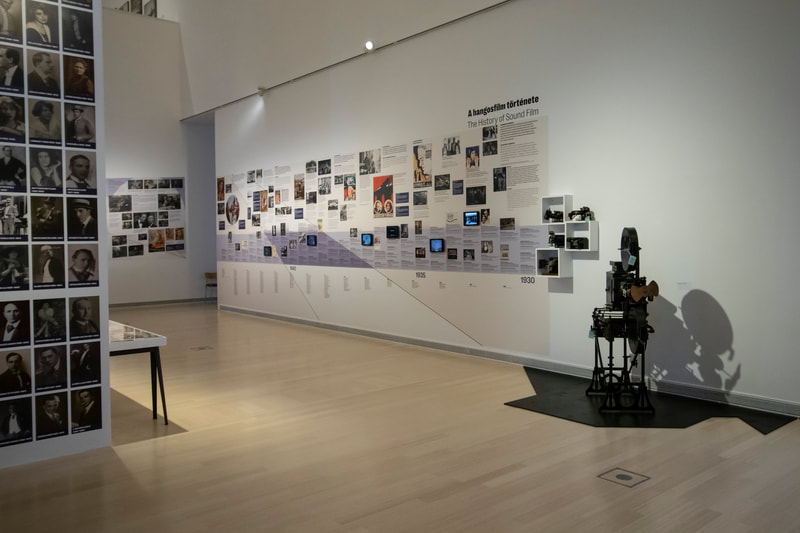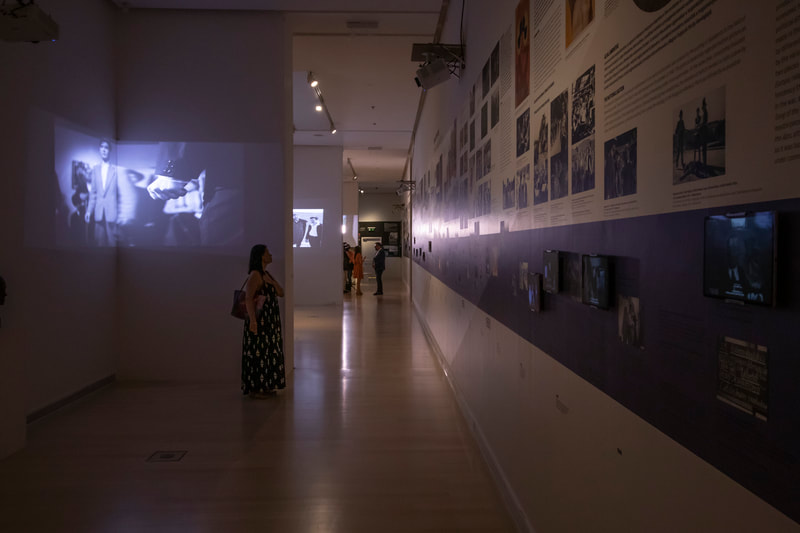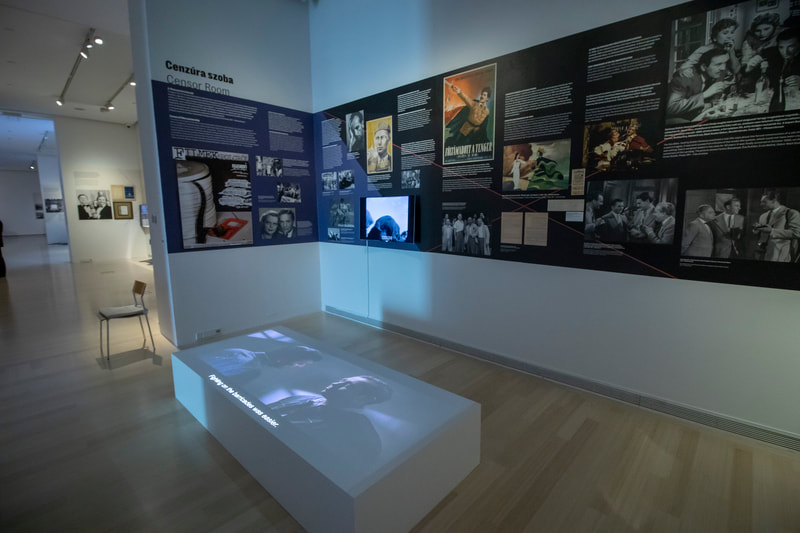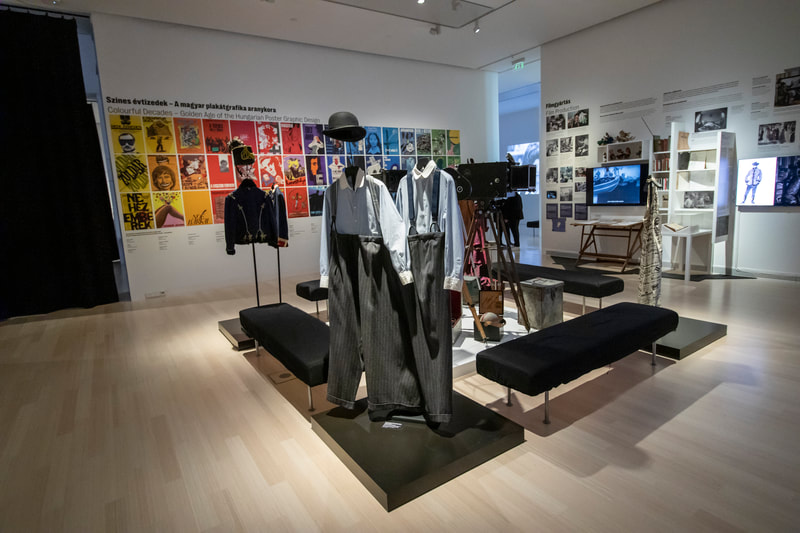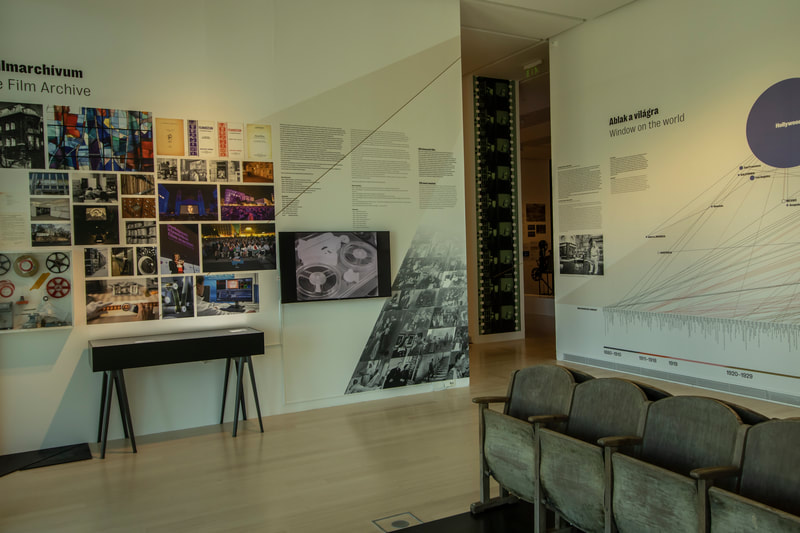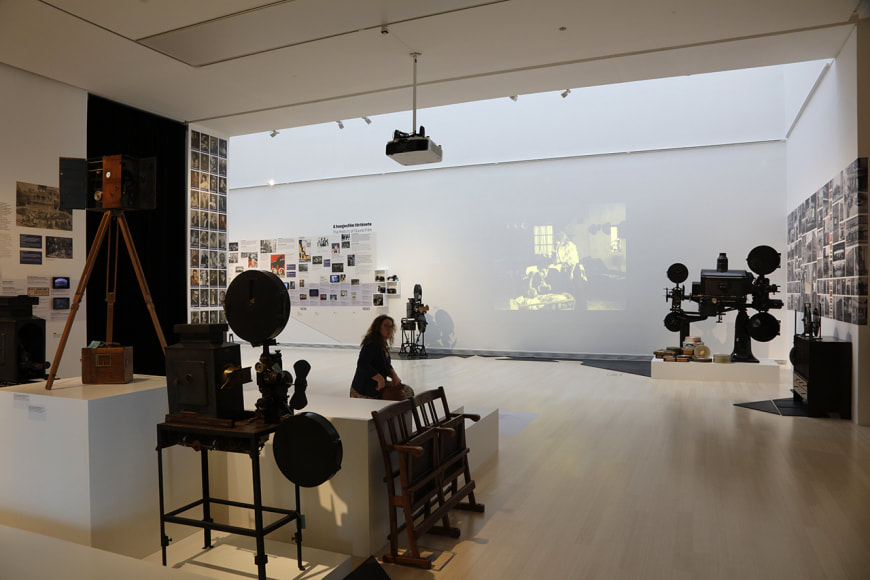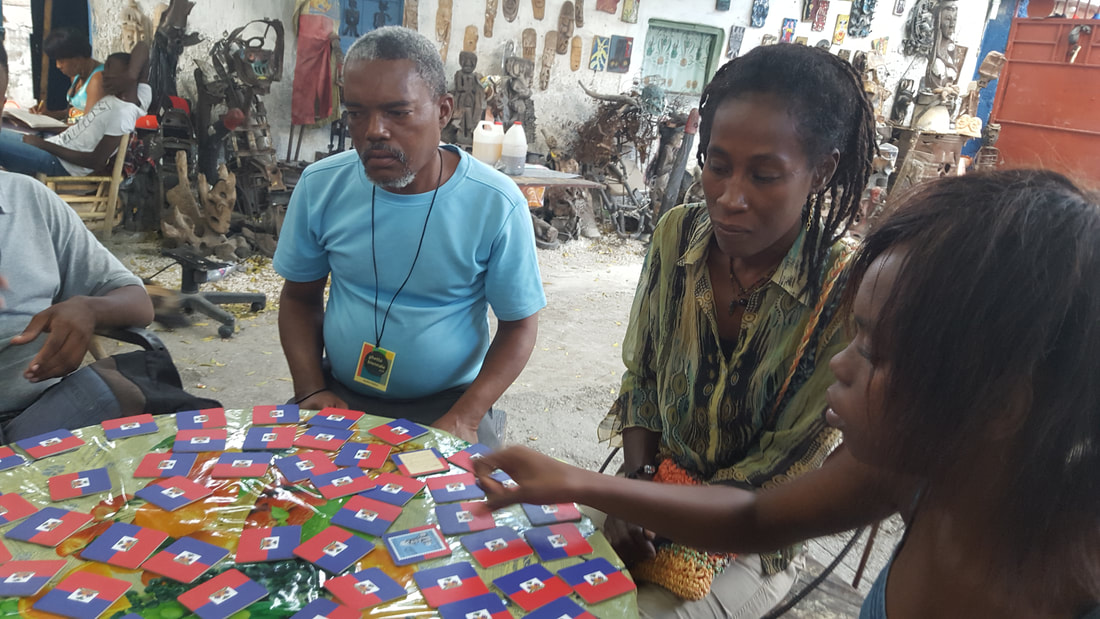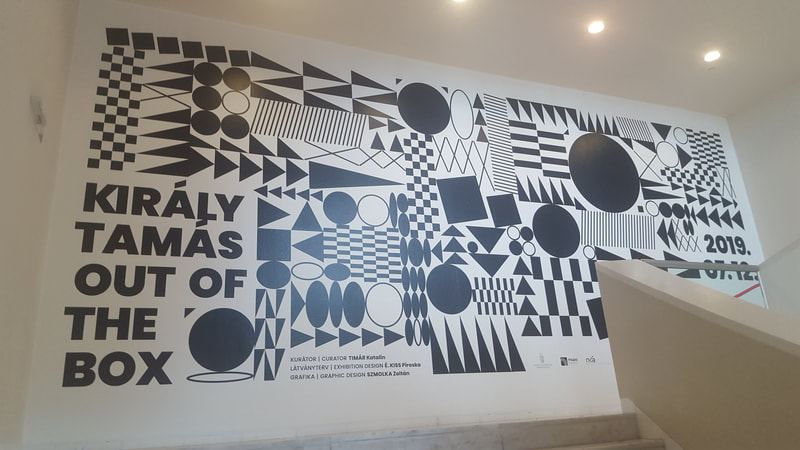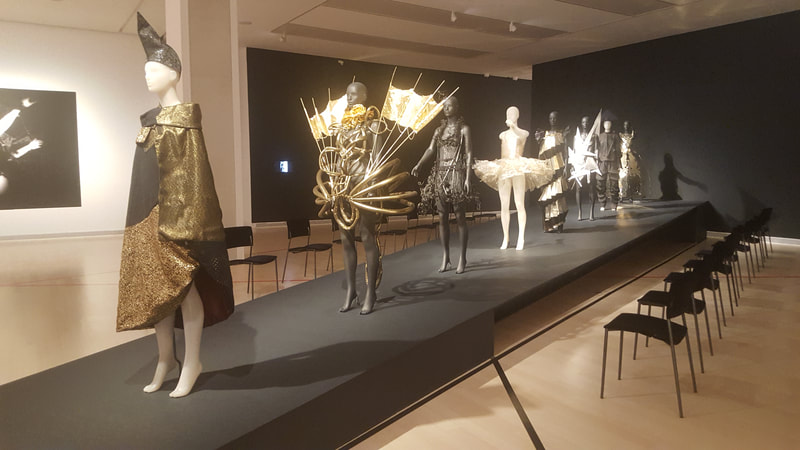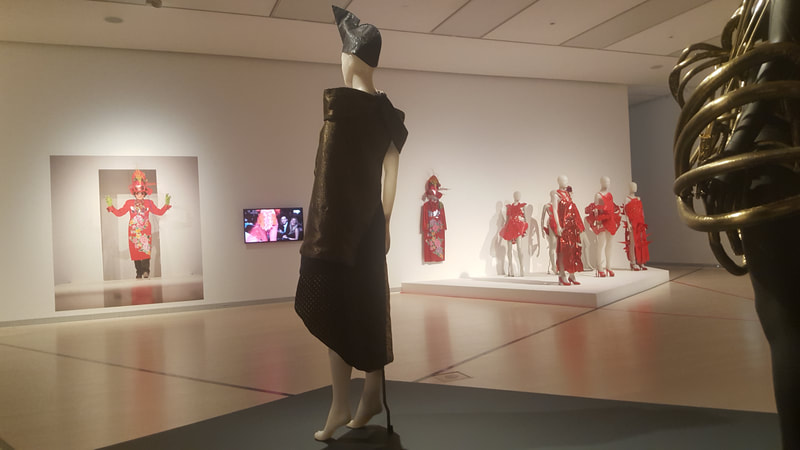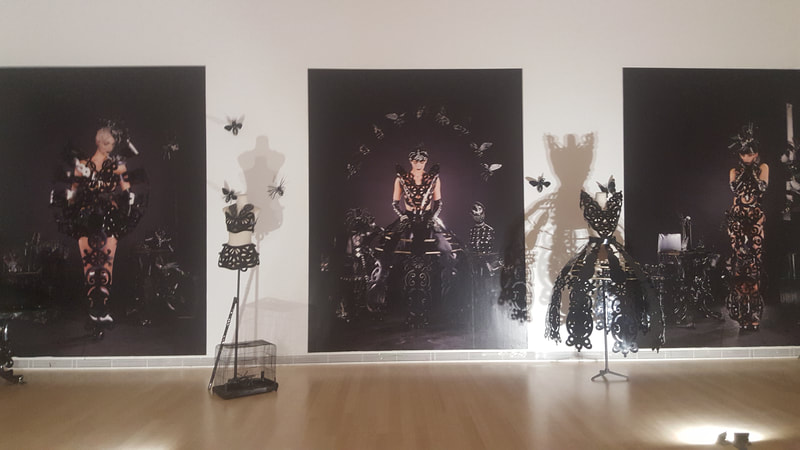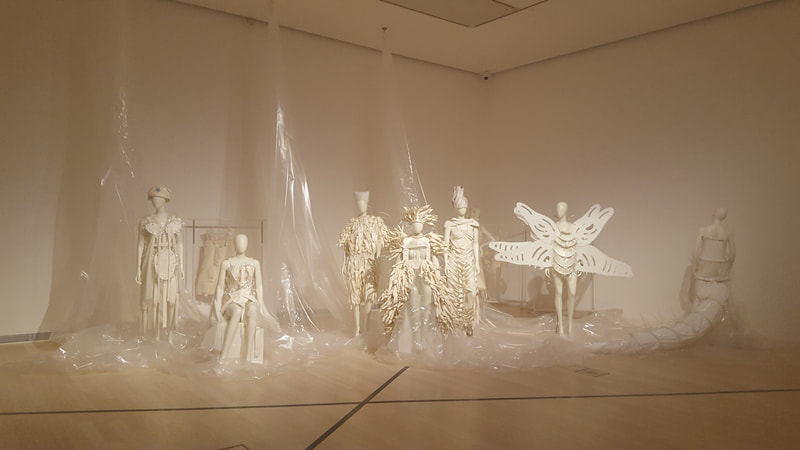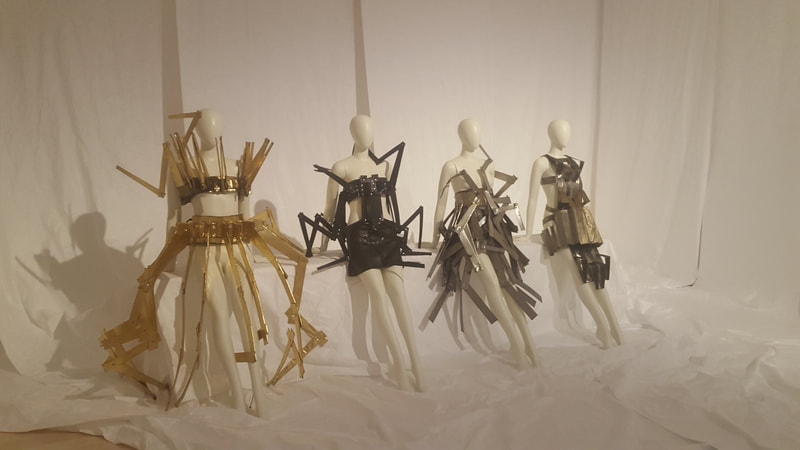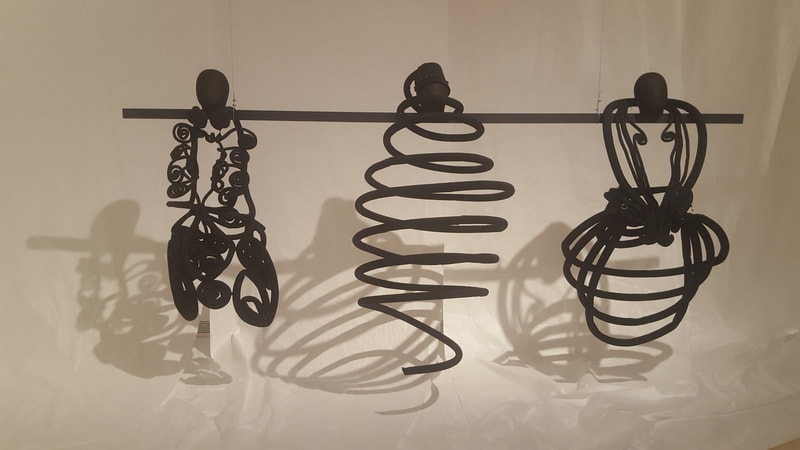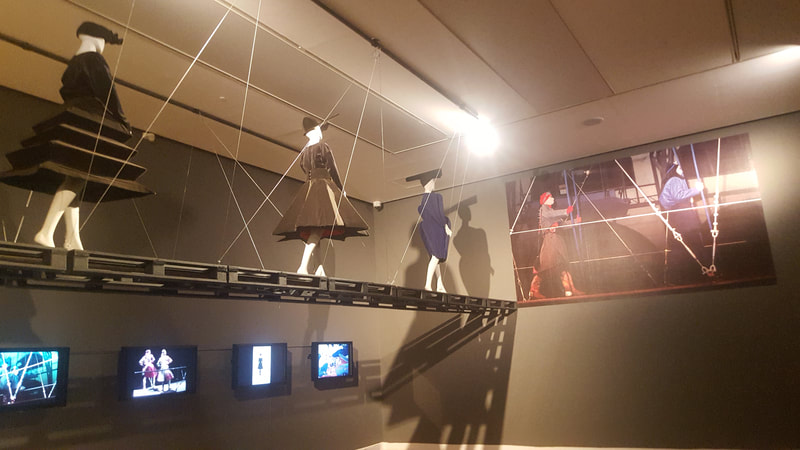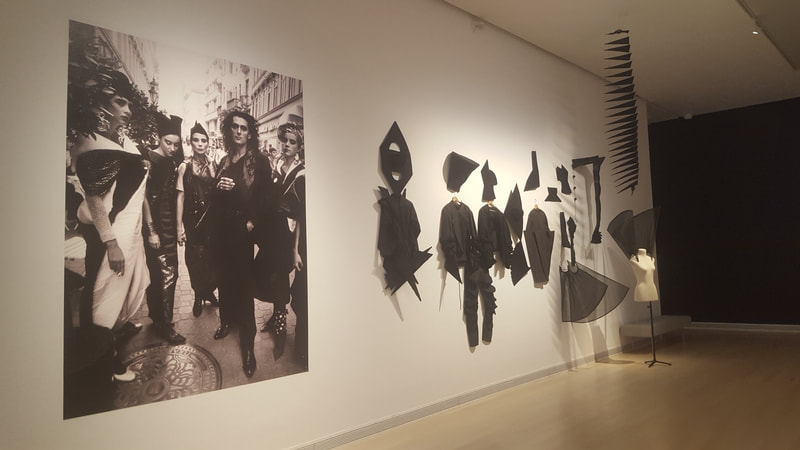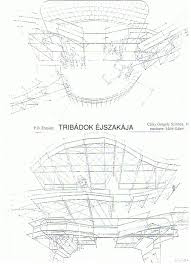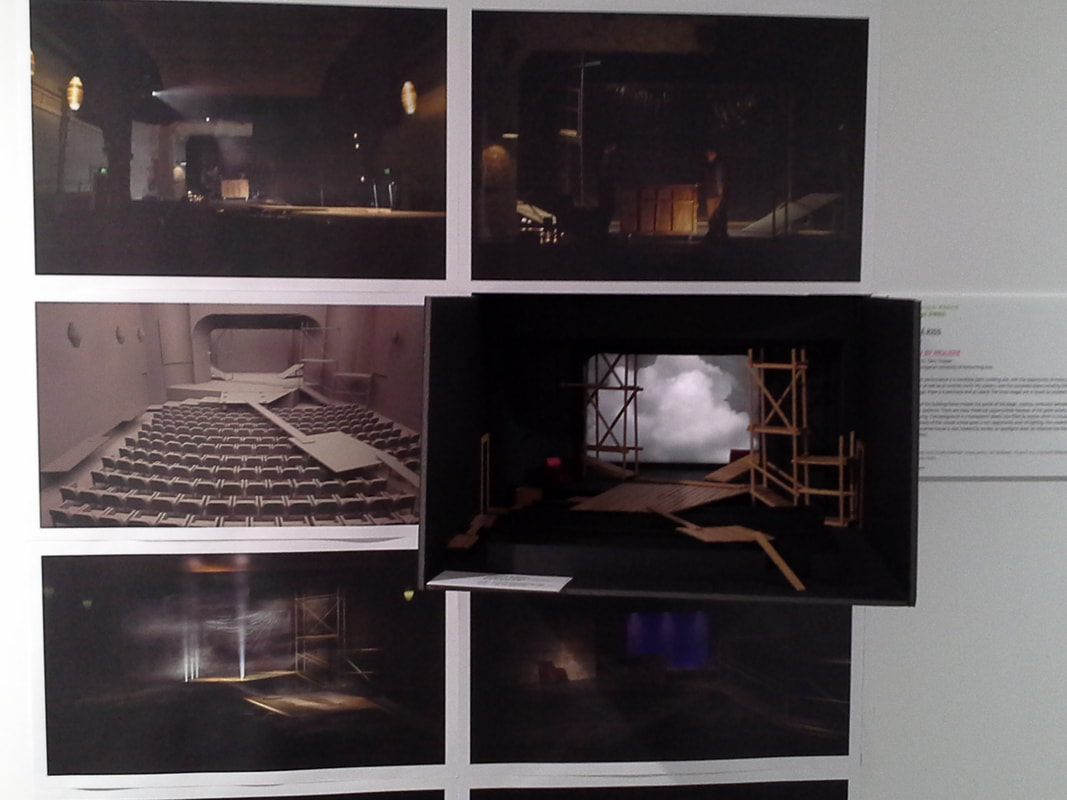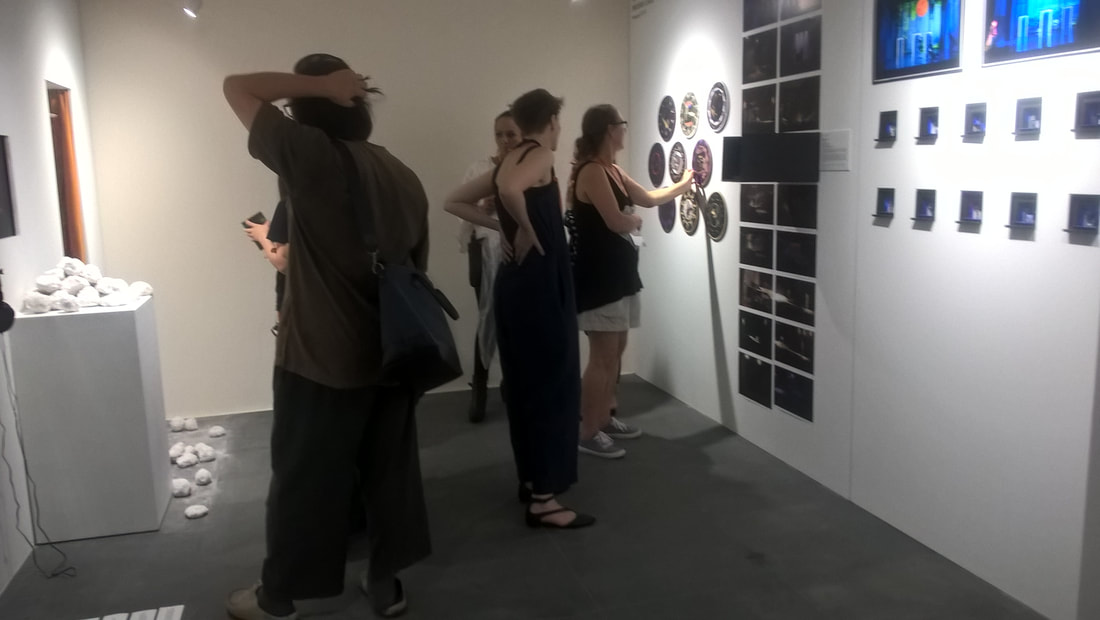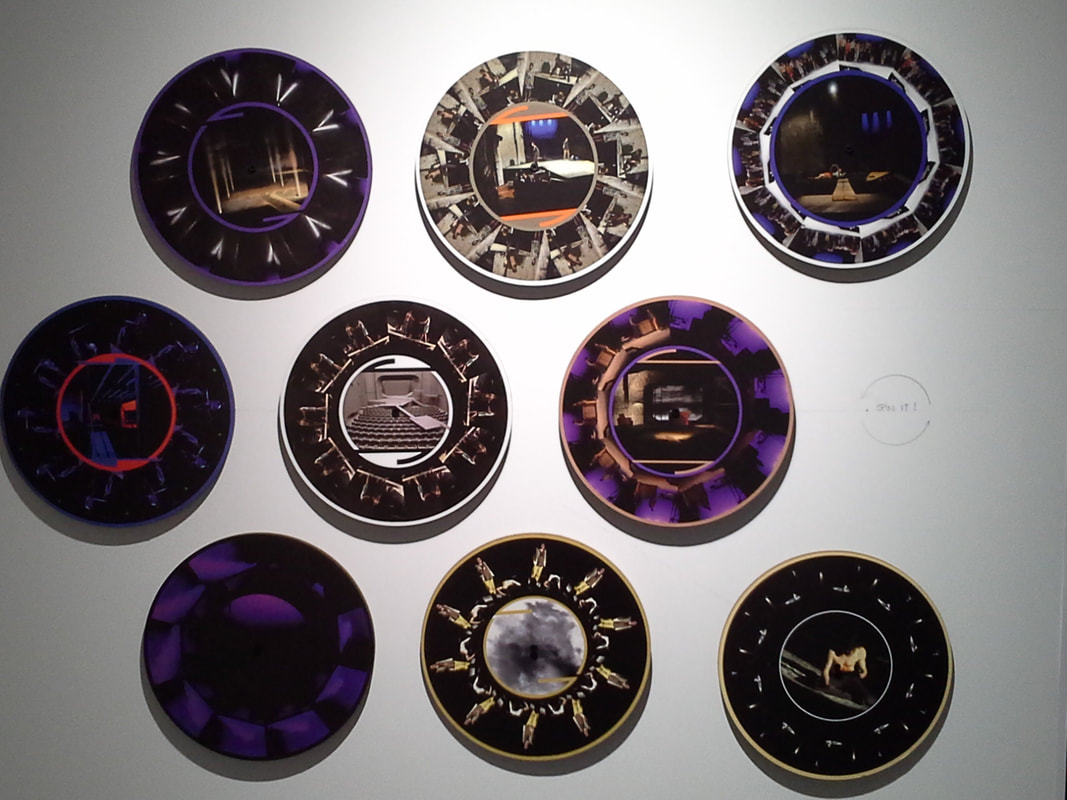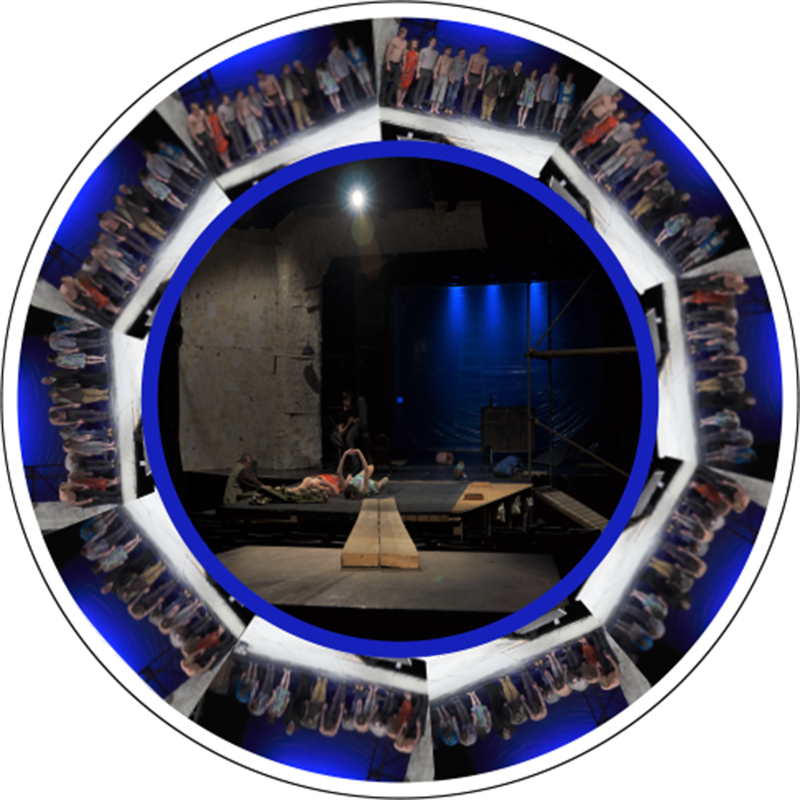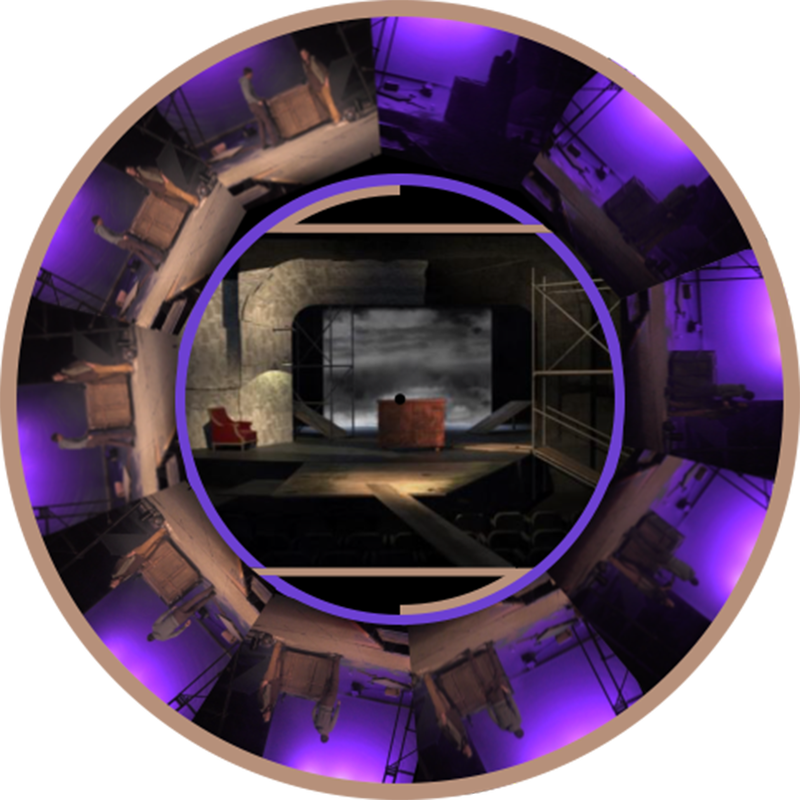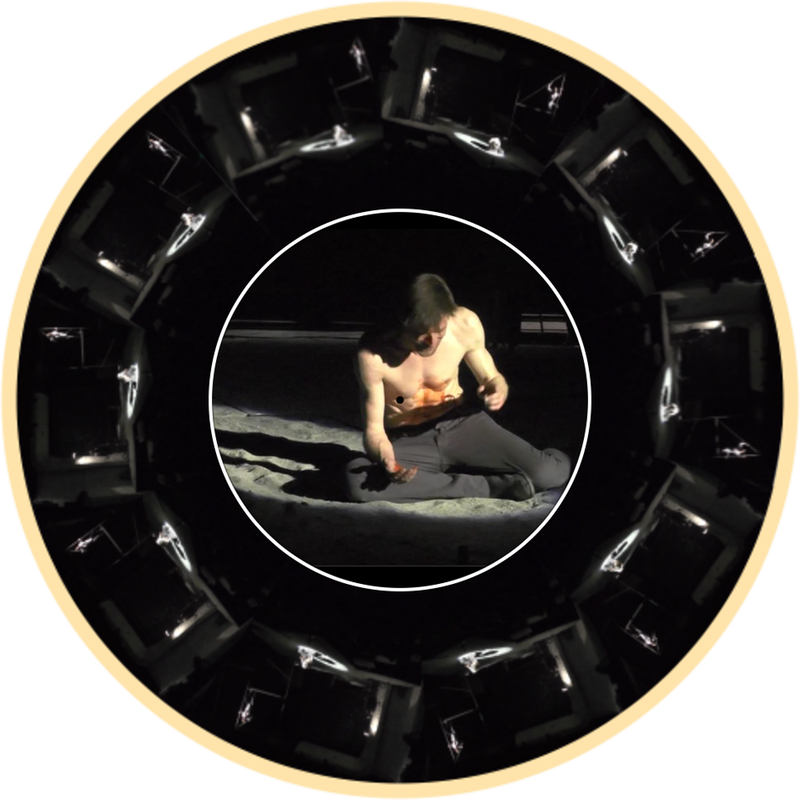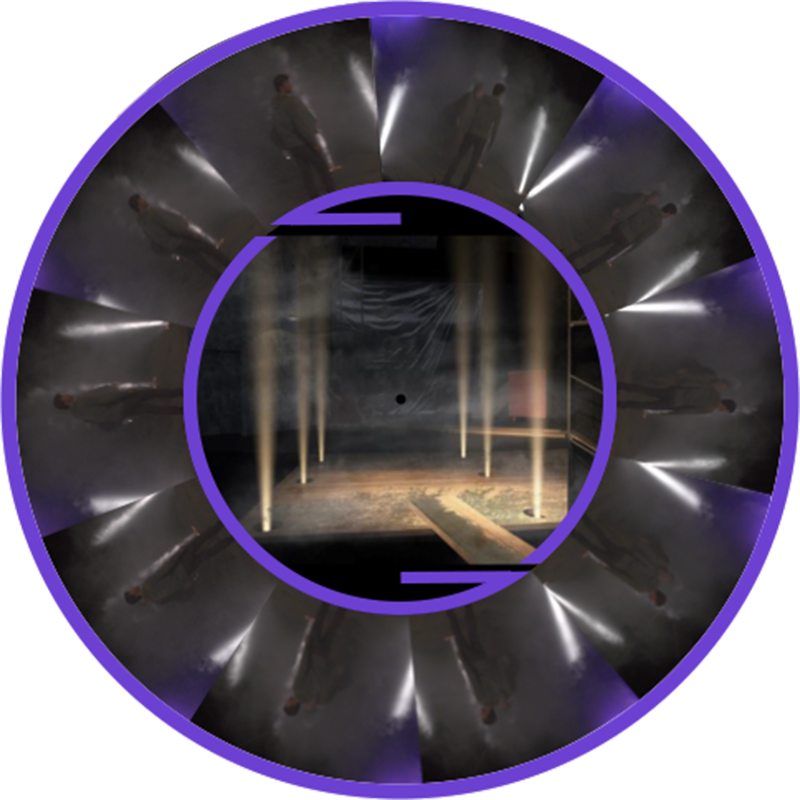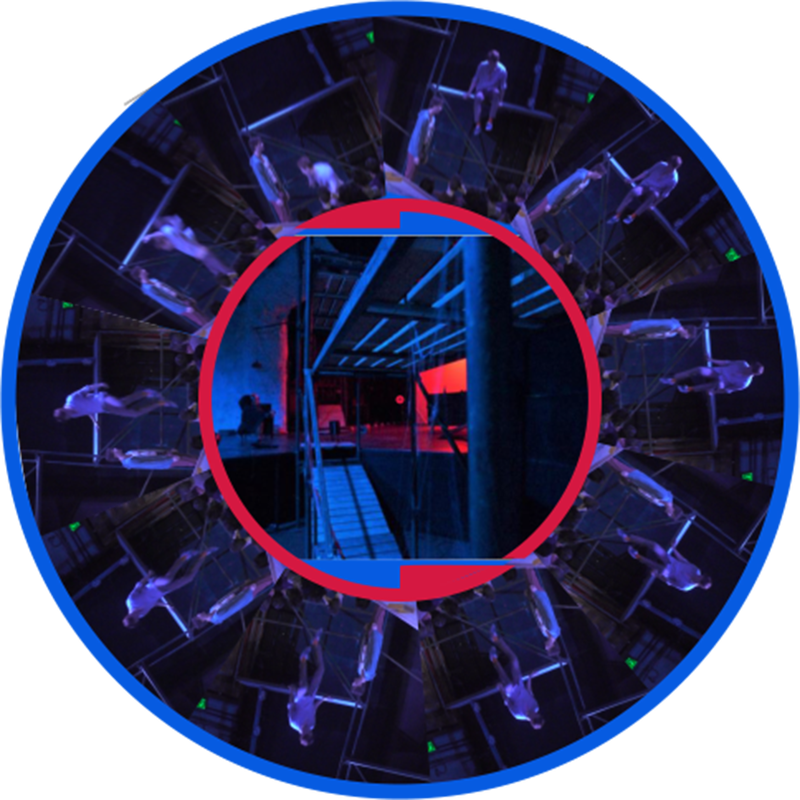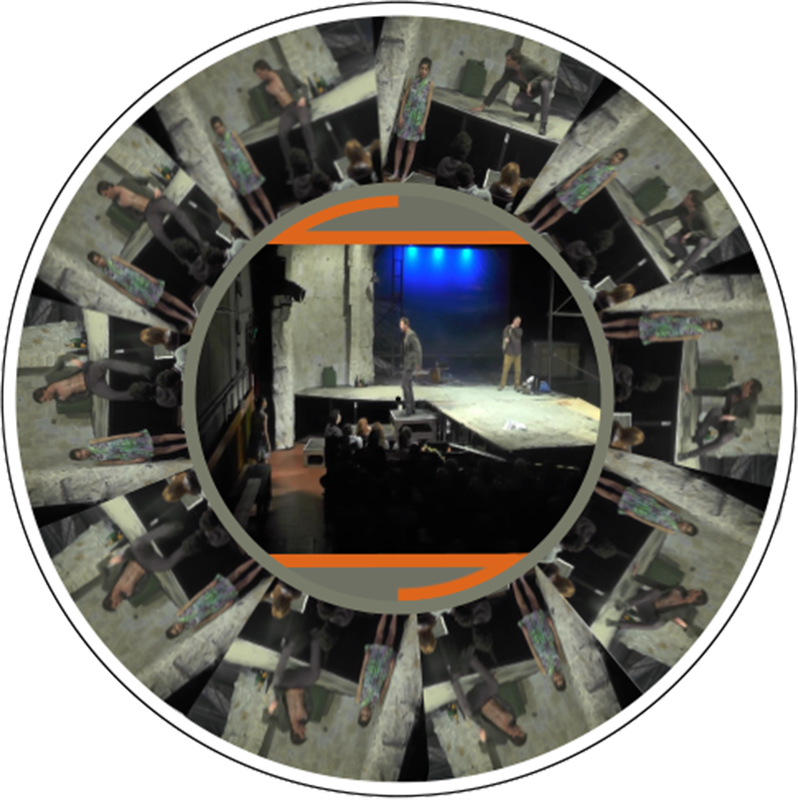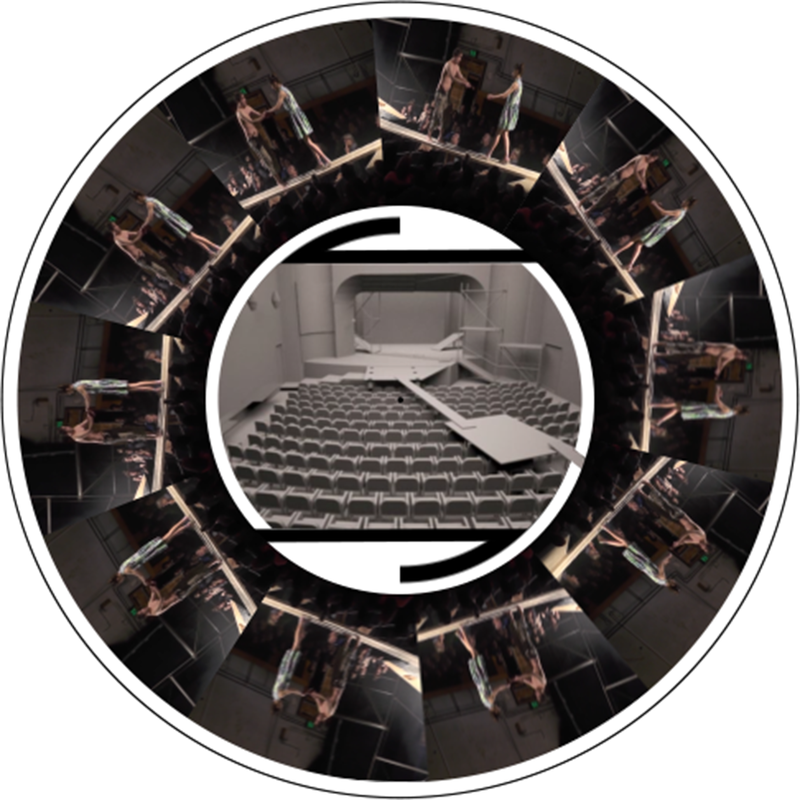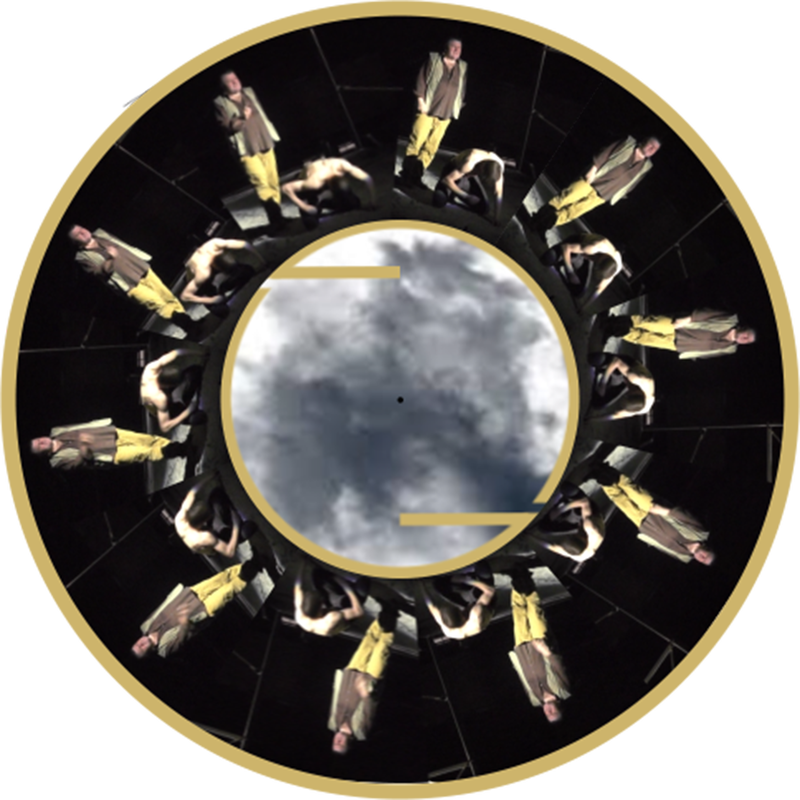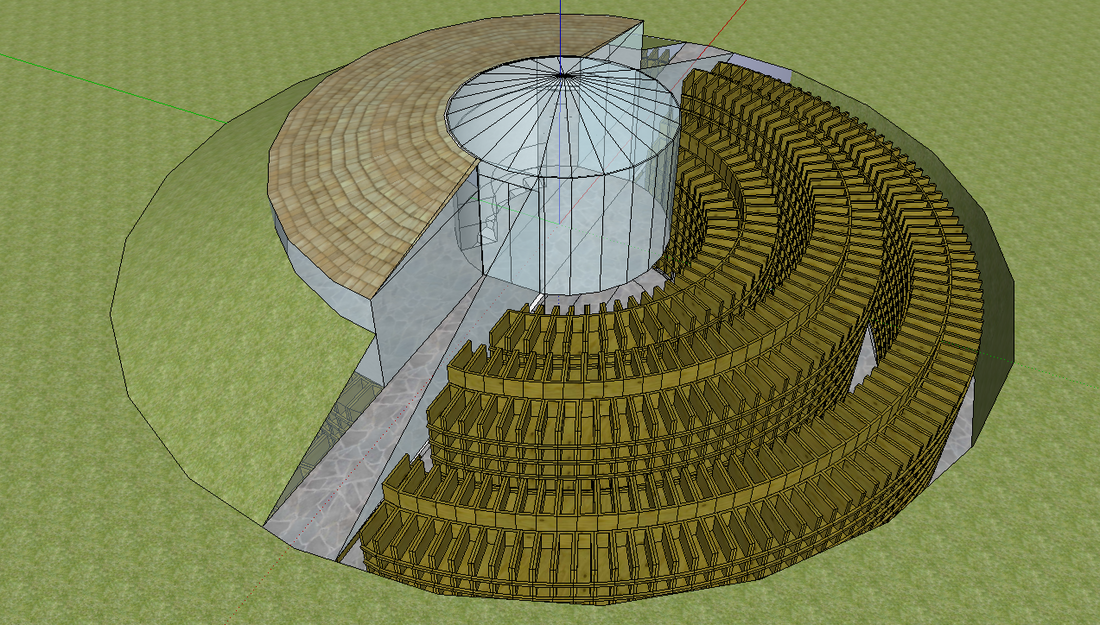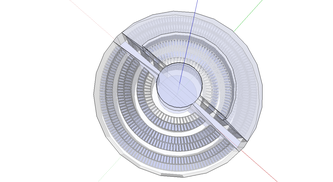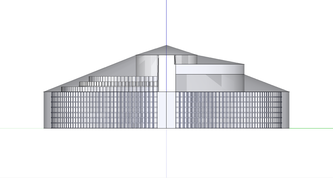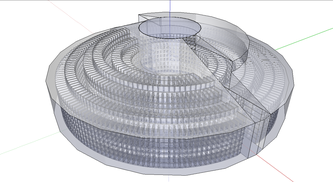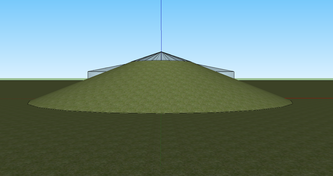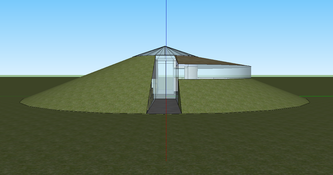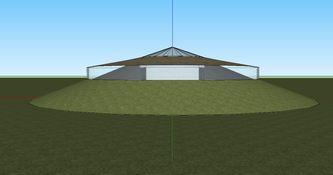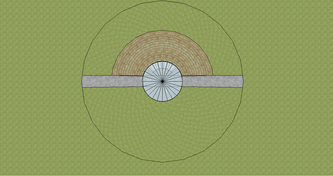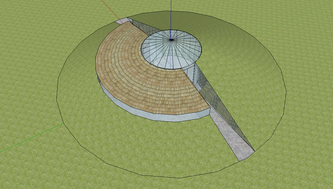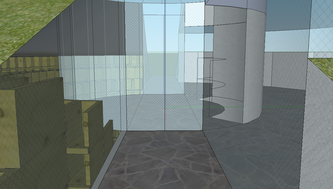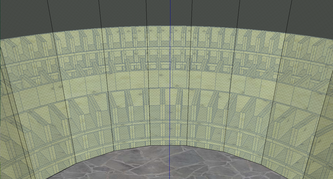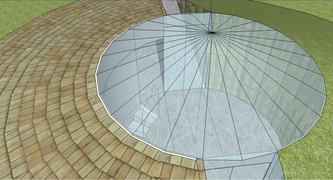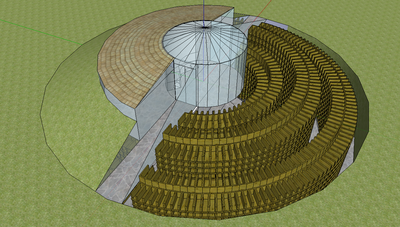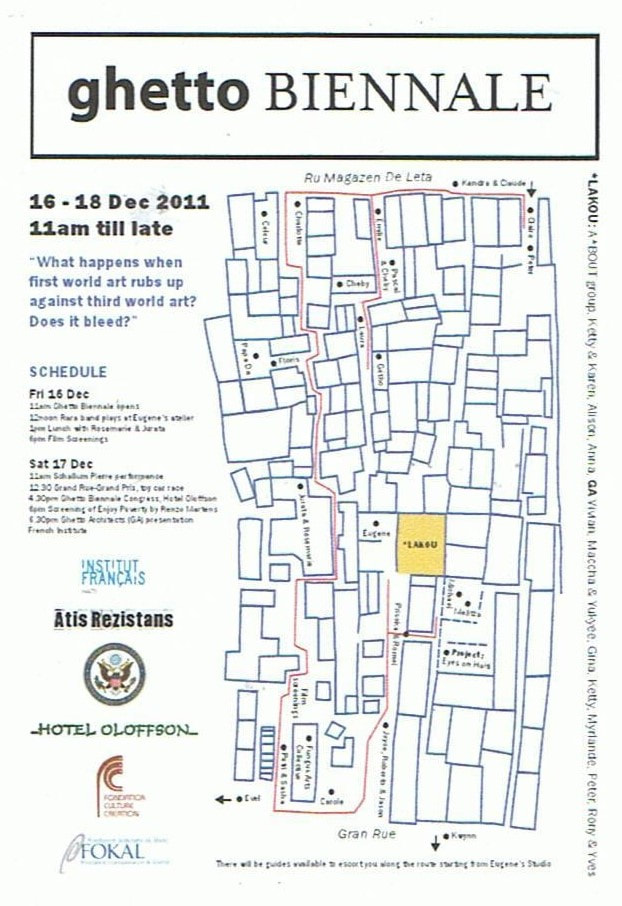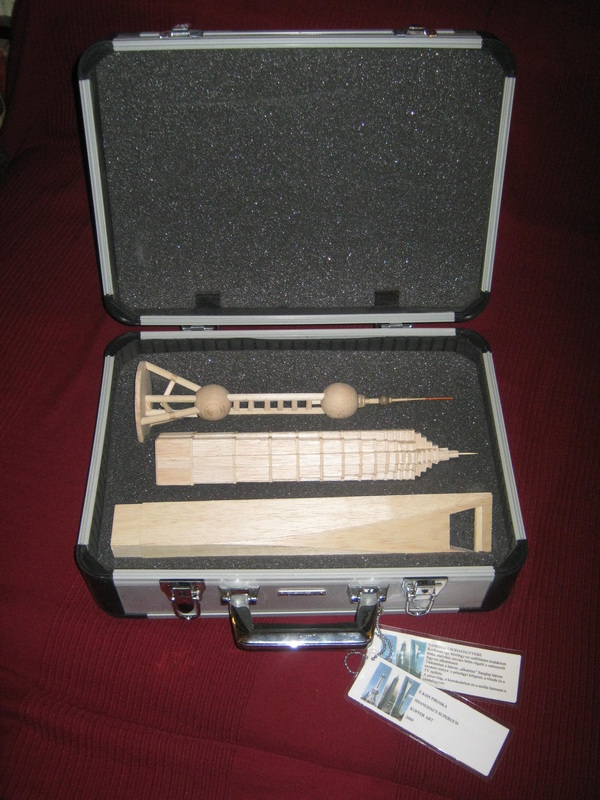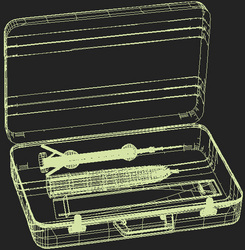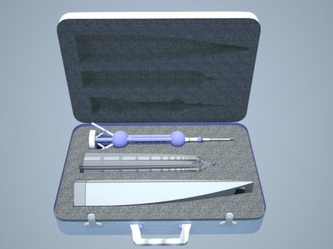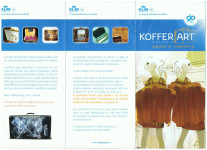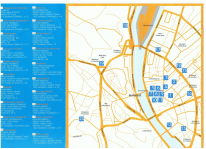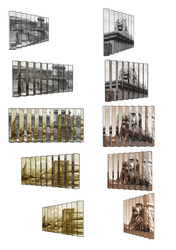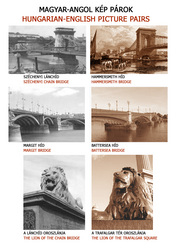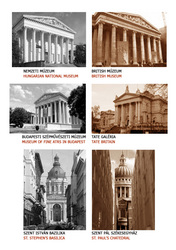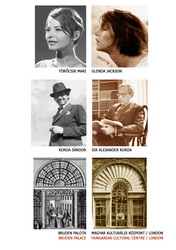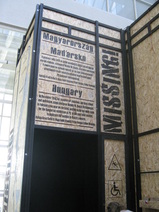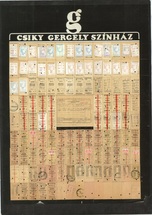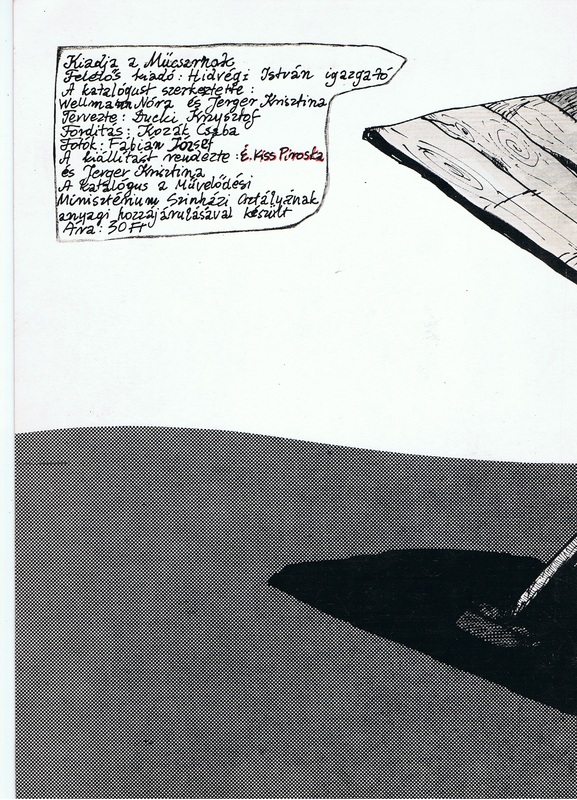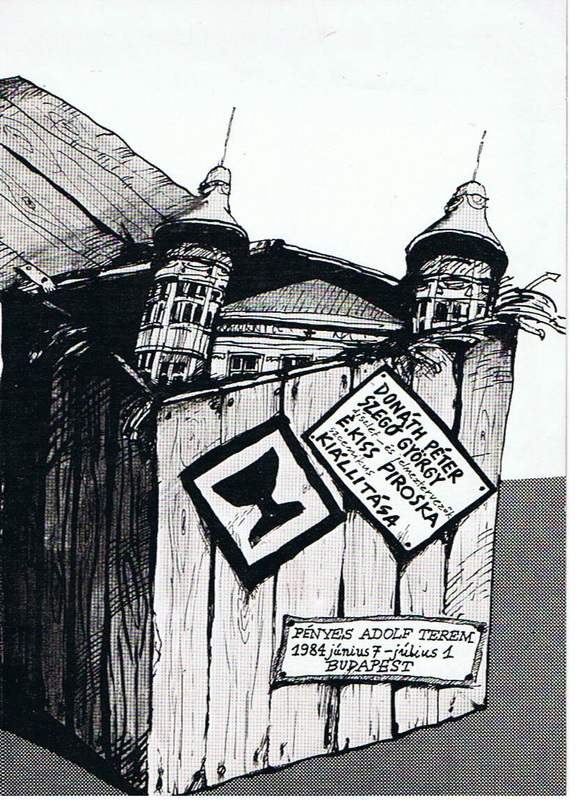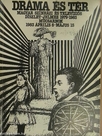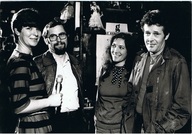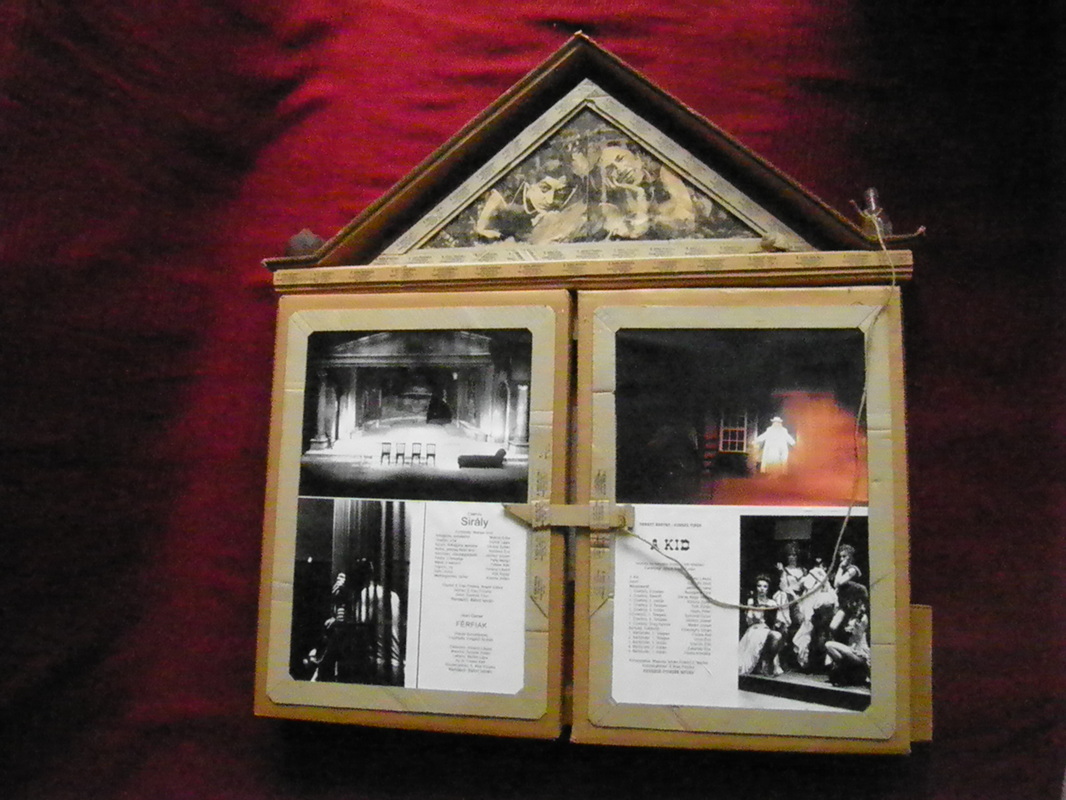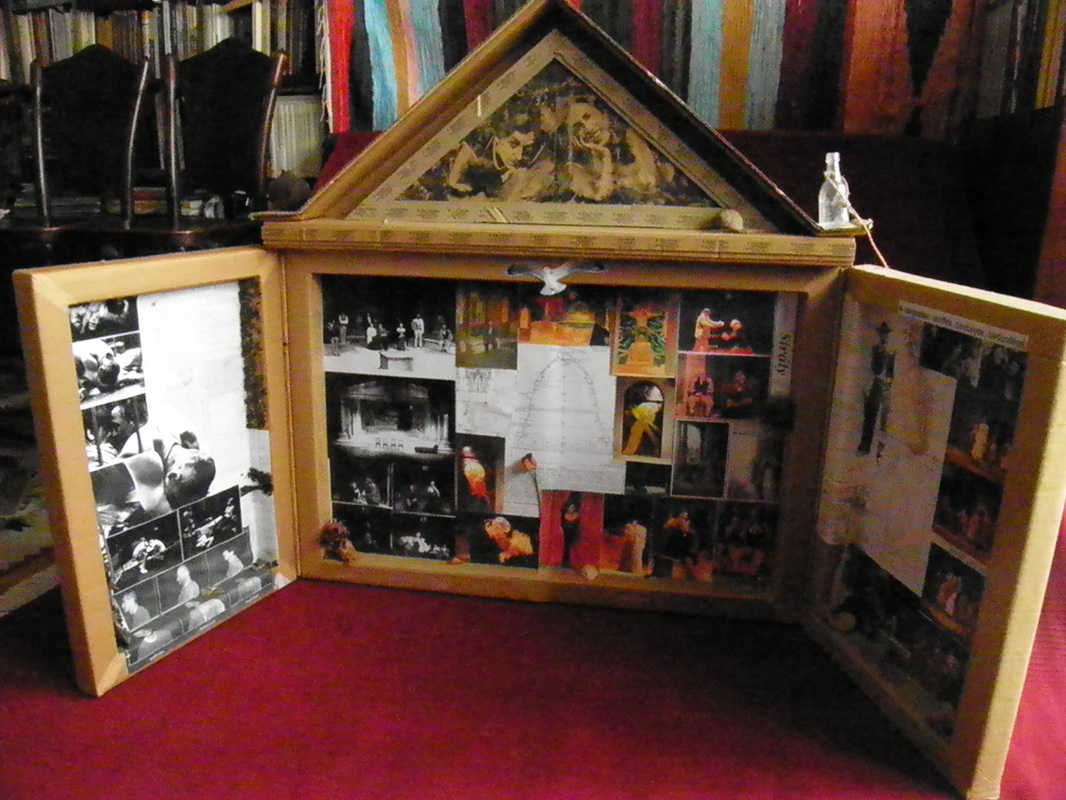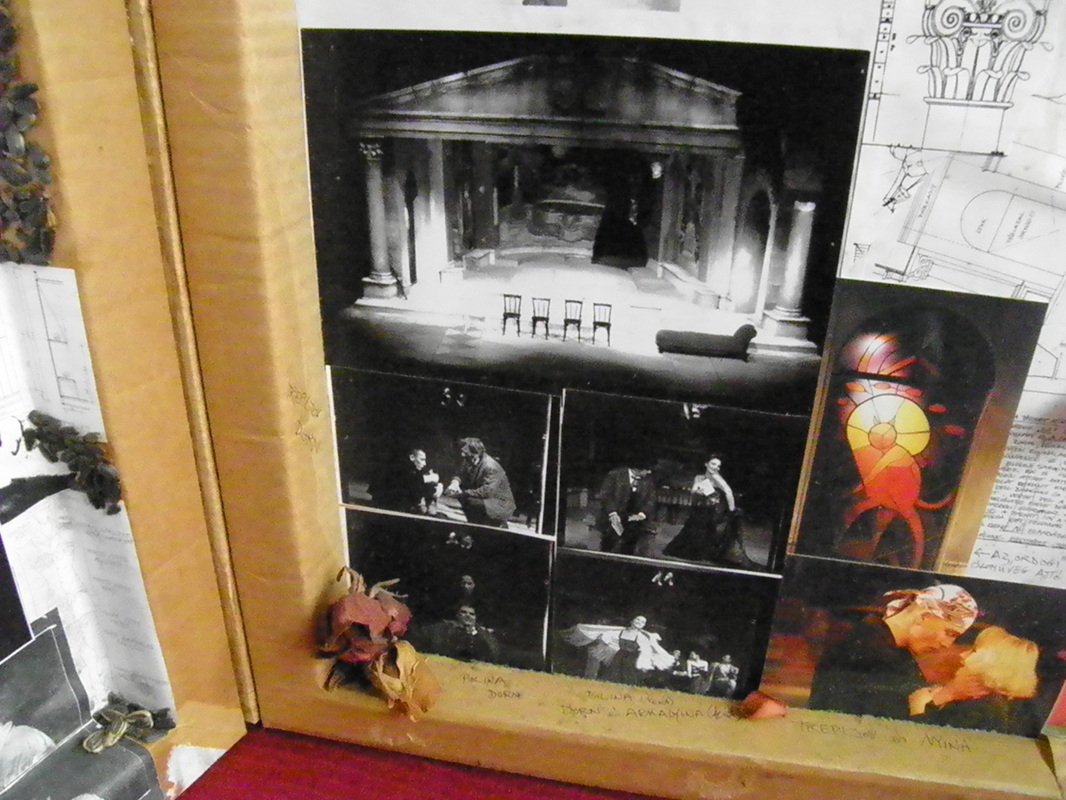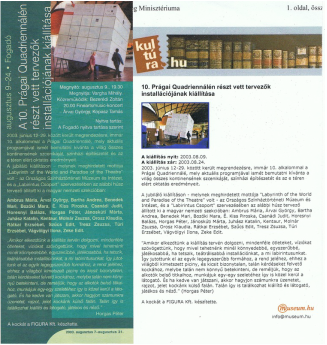Piroska E.Kiss
Liana
2023, Hungarian University of Fine Arts, Budapest
-- curatorial work and exhibition design by Piroska É.Kiss --
-- curatorial work and exhibition design by Piroska É.Kiss --
|
„A liana is a long-stemmed, woody vine that is rooted in the soil at ground level and uses trees to climb up to sunlight.” The 150 years old Hungarian University of Fine Arts is such a strong tree with a rank structure of masters-students lianas, that shows the tradition, the permanent reformation till the contemporary creative work. We have chosen a few long master-student chains in which members were students and then teachers at the university. Each of them is represented by one artwork. The relations are shown by white paper lines. These white lines don’t influence the effect of the exhibited artworks. The small pictures represent those ex-students of the given master who have an important role in Hungarian art history but have never thought at the university. |
Artwork by Eszter Radák showed in the exhibition
Wide Angle - 120 Years of Hungarian Cinema
2022, Liszt Institue, Brussels
-- exhibition design by Piroska É.Kiss --
-- exhibition design by Piroska É.Kiss --
Wide Angle - 120 Years of Hungarian Cinema
2021, Ludwig Museum, Budapest
-- exhibition design by Piroska É.Kiss --
-- exhibition design by Piroska É.Kiss --
You can walk around the complete exhibition in 3D:
nagylatoszog.nfi.hu/3d
6th Ghetto Biennale
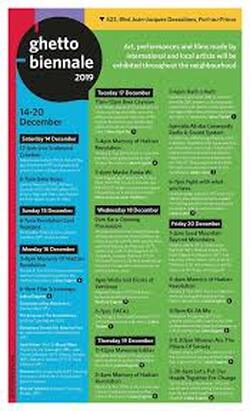
Porte au Prince, Haiti, 2019
Memory of Haitian Revolution
by Piroska É.Kiss, Hungary
A good way to learn much about the Haitian revolution and to memorize this knowledge is to play a game about the Haitian revolution.
I envision a memory game where you need to match pairs of cards. Playing is very simple - you turn over one card and then try to find a matching card. There are 64 pairs of pictures about Haitian history, mostly the Haitian revolution.
The background of all cards shows the colors of the Haitian flag and the back side of all cards is the Haitian flag.
Memory of Haitian Revolution
by Piroska É.Kiss, Hungary
A good way to learn much about the Haitian revolution and to memorize this knowledge is to play a game about the Haitian revolution.
I envision a memory game where you need to match pairs of cards. Playing is very simple - you turn over one card and then try to find a matching card. There are 64 pairs of pictures about Haitian history, mostly the Haitian revolution.
The background of all cards shows the colors of the Haitian flag and the back side of all cards is the Haitian flag.
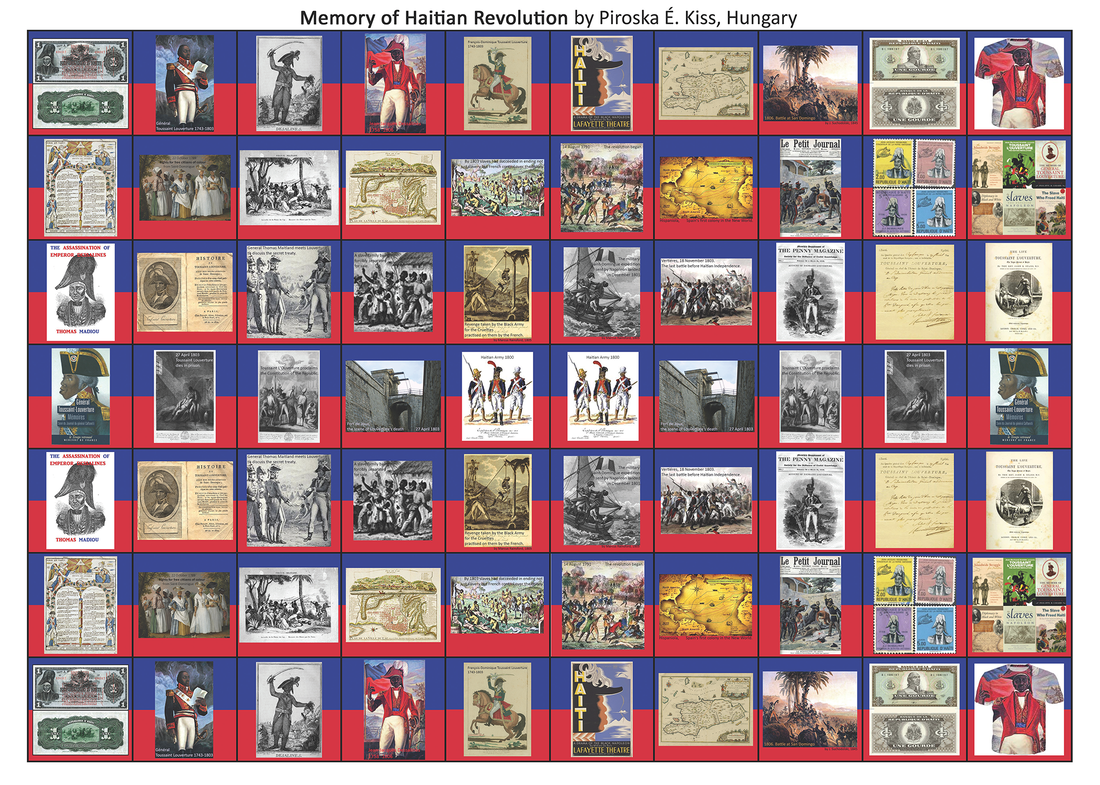
Tamás Király. Out of the Box
2019 Ludwig Museum, Budapest
-- exhibition design by Piroska É.Kiss --
-- exhibition design by Piroska É.Kiss --
Even Technical Drawing can be Art
Fuga, Budapest
World Stage Design 2017
Taipei, Taiwan
stage design for Don Juan by Moliere
(directed by Kriszta Székely at Hungarian University of Theatre and Film, 2014)
stage design for Don Juan by Moliere
(directed by Kriszta Székely at Hungarian University of Theatre and Film, 2014)
Refugees' Tower
Project made for 'Babel' Competition
Outsider Art Fair, New York, Metropolitan Pavilon, 2016
Outsider Art Fair, New York, Metropolitan Pavilon, 2016
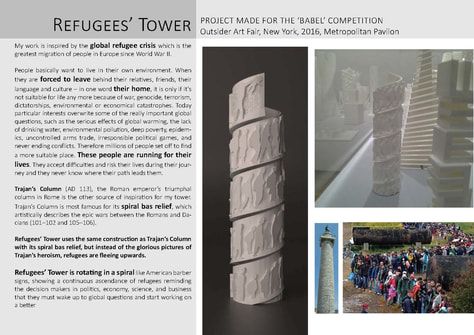
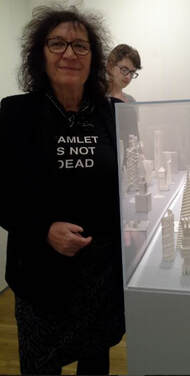
Perkáta - Ossuary
The archeological explorations at Perkáta raised the problem of storing the skeletal remains in a permanent but accessible way. To solve this problem, I have designed a building with three functions.
1. Primarily it is a cemetery: an orderly and dignified resting place of the almost 5000 persons whose remains archeologists have excavated.
2. It is an accessible container: the arching corridors among the cases of remains provide access to every bone for scientific research..
3. It is a double exhibition space: the multitude of bones is visible through the central glass wall, whereas the documentation of the exploration, and the face reconstructions made by the Hungarian University of Fine Arts are presented in the exhibition hall.
1. Primarily it is a cemetery: an orderly and dignified resting place of the almost 5000 persons whose remains archeologists have excavated.
2. It is an accessible container: the arching corridors among the cases of remains provide access to every bone for scientific research..
3. It is a double exhibition space: the multitude of bones is visible through the central glass wall, whereas the documentation of the exploration, and the face reconstructions made by the Hungarian University of Fine Arts are presented in the exhibition hall.
Ghetto déjá vu
2nd Ghetto Biennale, Port au Prince, Haiti, 2011
I am deeply committed to the problems of poverty and ghetto life - that is why I wanted to take part in the 2nd Ghetto Biennale.
Hungarian proverty has also created its ghettos, which are mostly inhabited by Gipsies. Despite a different standard of poverty, a different climate, different habits, etc, I think the athmosphere of hopelessness, the people living there, the objects created by them, and the art emerging there are similar in Hungarian and Haitian ghettos.
My project involves a series of photos showing the similarities, matching situations, scenes and moments. I sent many photos from Hungarian ghettos to a Haitian colleague, Romel Jean Pierre, who looked for the equivalents of my pictures in Port-au-Prince. Then he sent me ghetto photos whose equivalents I tryed to find in Budapest. We have continued this coupling of pictures till the beginning of the Biennale. I wanted to create a strong form of exhibiting those pictures on the walls of an alleyway. So we organized the pictures into the form of a tabloid.
H&H Ghetto Magazine / Hungarian and Haitian edition, 2011
Hungarian proverty has also created its ghettos, which are mostly inhabited by Gipsies. Despite a different standard of poverty, a different climate, different habits, etc, I think the athmosphere of hopelessness, the people living there, the objects created by them, and the art emerging there are similar in Hungarian and Haitian ghettos.
My project involves a series of photos showing the similarities, matching situations, scenes and moments. I sent many photos from Hungarian ghettos to a Haitian colleague, Romel Jean Pierre, who looked for the equivalents of my pictures in Port-au-Prince. Then he sent me ghetto photos whose equivalents I tryed to find in Budapest. We have continued this coupling of pictures till the beginning of the Biennale. I wanted to create a strong form of exhibiting those pictures on the walls of an alleyway. So we organized the pictures into the form of a tabloid.
H&H Ghetto Magazine / Hungarian and Haitian edition, 2011
KLM competition
On the occassion of the 90th anniversary of its foundation, the Dutch airline announced the KofferArt/ SuitcaseArt application. The task was to create an object in a suitcase inspirated by one of the five given cities. First you submitted the project, then the jury choose the 20 best to be realised for the exhibition. Two of my works were among the 20: Koffer Puzzle/ Suitcase Puzzle and the Shanghai Supergun.
SHANGHAI’S SUPERGUN
The suitcase in my project is a case for carrying a weapon. The foam rubber lining of the case keeps the pieces of the dismantled weapon fixed.
In this case, the three pieces are three modern towers of Shanghai: the financial center, the stock exchange, and the TV.
The triplet of finance, commerce, and mass media constitute the supergun.
SHANGHAI’S SUPERGUN
The suitcase in my project is a case for carrying a weapon. The foam rubber lining of the case keeps the pieces of the dismantled weapon fixed.
In this case, the three pieces are three modern towers of Shanghai: the financial center, the stock exchange, and the TV.
The triplet of finance, commerce, and mass media constitute the supergun.
London, Déjá vu 2009
Budapest and London are full of similar museums, churches, blocks of houses, markets, palm houses, bridges, portals, windows, statues, and so on.
Despite characteristic differences between the two countries, we obviousoy share the same culture.
Despite characteristic differences between the two countries, we obviousoy share the same culture.
Exhibitions of Scenography
2017. Látványtár, Fuga, Budapest
2011. Quadriennale, Magyar pavilon, Prága
2010. Díszlet, jelmez, Olaf Palme ház, Budapest
2004. Díszlet az egész világ, kilenc tervező kiállítása, IDC galéria, Budapest
2003. Quadriennále, Magyar pavilon, Prága
2003. PQ Magyar pavilon, Millenáris, Budapest
2001. Triennale, Újvidék
1999. Színpadkép helyett, tervezők képzőművészeti munkái, Pataky Művelődési Központ, Budapest
1995. Magyar Szcenikai Kiállítás, Várszínház
1995. Magyar Szcenikai Kiállítás, Magyar Kultúra Háza, Prága
1984. Donáth, É.Kiss, Szegő, kaposvári tervezők kiállítása, Fényes Adolf terem, Budapest
1983. Országos Szcenikai Kiállítás, Műcsarnok, Budapest
1982. Országos Szcenikai Kiállítás, Debrecen
2011. Quadriennale, Magyar pavilon, Prága
2010. Díszlet, jelmez, Olaf Palme ház, Budapest
2004. Díszlet az egész világ, kilenc tervező kiállítása, IDC galéria, Budapest
2003. Quadriennále, Magyar pavilon, Prága
2003. PQ Magyar pavilon, Millenáris, Budapest
2001. Triennale, Újvidék
1999. Színpadkép helyett, tervezők képzőművészeti munkái, Pataky Művelődési Központ, Budapest
1995. Magyar Szcenikai Kiállítás, Várszínház
1995. Magyar Szcenikai Kiállítás, Magyar Kultúra Háza, Prága
1984. Donáth, É.Kiss, Szegő, kaposvári tervezők kiállítása, Fényes Adolf terem, Budapest
1983. Országos Szcenikai Kiállítás, Műcsarnok, Budapest
1982. Országos Szcenikai Kiállítás, Debrecen
1995. Magyar Szcenikai Kiállítás,
Magyar Kultúra Háza, Prága és Várszínház
Magyar Kultúra Háza, Prága és Várszínház
